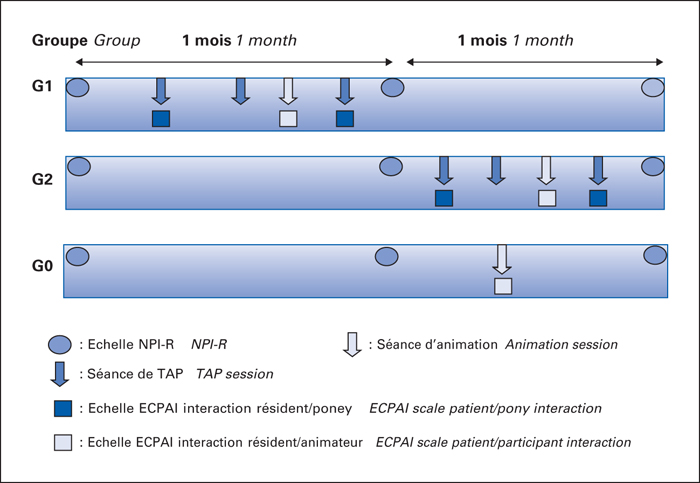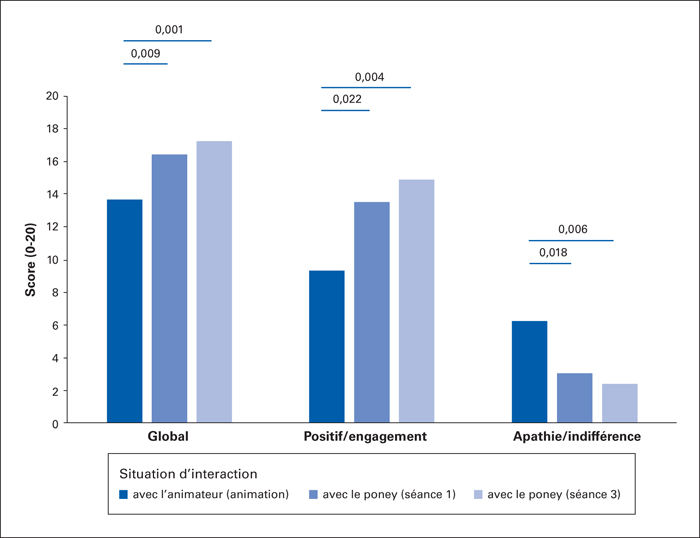Gériatrie et Psychologie Neuropsychiatrie du Vieillissement
MENUEffects of pony-assisted therapy on the behavior of older people with neurocognitive disorders living in nursing homes Volume 18, issue 3, Septembre 2020
- Key words: animal mediation, horse-assisted therapy, Alzheimer's disease, anxiety, apathy
- DOI : 10.1684/pnv.2020.0854
- Page(s) : 273-82
- Published in: 2020
Context: Experienced in psychomotricity in two nursing homes, pony-assisted therapy shows first positive effects on psycho-behavioral symptoms. Recognized in the field of disability and psychiatry, this form of therapy is not developed in gerontology. Objectives: To measure the effects of this therapy on the behavior of elderly people with neurocognitive disorders living in long-term care and especially on the involvement in this activity. Anxiety and apathy were chosen as the measurement criteria. Methods: An intervention study with an experimental cross-study design was conducted over two months for 23 subjects. An intervention group was studied during a period with TAP and a period without TAP. Another group without intervention was also studied. All participants were assessed before and after intervention with the NPI-R scale. The engagement during two TAP sessions and one animation time was also evaluated with the ECPAI scale. Results: In the crossover study, positive engagement is more important in participant/pony interaction than in participant/facilitator interaction (p<0.01). The ECPAI score reflecting apathetic behavior was significantly decreased during interaction with the animal than in the interaction with the facilitator in patients undergoing therapy (p<0.01). The ECPAI score reflecting engagement is greater in pony interaction for participants in therapy than in the control group in facilitator interaction (p<0.01). There is no significant change in the scores for the anxiety and apathy items on the NPI-R scale. Conclusion: TAP participates in the positive engagement of the elderly people in the interaction with the animal. These results are consistent with the conclusions of the studies on animal mediation and confirm the clinical observations collected. TAP could work by improving self-esteem and valuing all of the person's preserved abilities.



